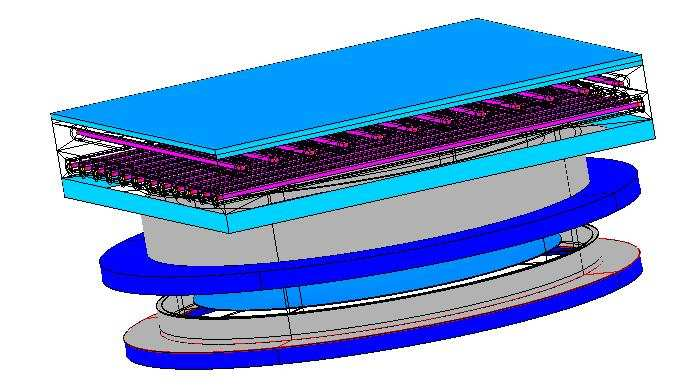Rapid Thermal Processing (RTP) is currently a very popular technology. It is widely used for many applications in semiconductor manufacturing processes including annealing (Rapid Thermal Annealing, RTA), oxidation (Rapid Thermal Oxidation, RTO) and chemical vapour deposition (Rapid Thermal Chemical vapour Deposition, RTCVD). RTP systems are singlewafer, cold wall chambers that utilize radiant heat sources to rapidly heat up the semiconductor substrate at high temperature and maintain it for a short length of time. One of the main technological hurdles that RTP must overcome is that of heating the wafer uniformly. The aim of this contribution is to evaluate the different ways used for the simulation of the heating of a silicon wafer by infrared lamps in a RTCVD system. The simulation results obtained, especially the temperature profiles of the wafer, are compared with experimental data. The reactor of the RTCVD system used is cylindrical. The heating is performed with two banks of twelve tungsten-halogen lamps located above a quartz window on top of the reactor. Numerical calculations are carried out through a computational fluid dynamics code CFD’ACE+ by using both discrete ordinate method (DOM) or Monte-Carlo method (MCM) of the radiation module. Experimental results are obtained by heating a silicon wafer having thermocouples embedded along a wafer diameter. Finally, we conclude by a comparison between both the approaches.
Rapid thermal processing (RTP) is an attractive technology to replace conventional batch processes in the microelectronic industry. RTP using a series of lamps for radiative heat transfer has advanced after earlier studies and it is widely used in applications in rapid thermal annealing (RTA) or rapid thermal oxidation (RTO) processes. RTP systems are single-wafer, cold-wall chambers that utilize radiant heat sources to rapidly heat up the silicon substrate at high temperature.
In the past, design optimization of technical systems was usually based on the experience of the designer, who analysed the system performances and modified individual system parameters. This kind of optimization becomes more and more difficult with an increasing number of design parameters. That is why the use of numerical methods for parameter optimization combined with simulation is a promising approach to overcome this problem.

Fig1
Tungsten-halogen lamps, for which power can be manipulated in groups, are used as radiation sources to heat the wafer. To avoid the deposition on the reactor walls, the latter are kept at a low temperature using a cool water flow. The substrate is a silicon wafer having a diameter of 200 mm and a thickness of 775 µm.
The numerical calculations are made using the finite volume method in which the conservation equations are integrated over each domain cell of the geometry. More details concerning the mathematical background can be found in.
A two dimensional geometry of the machine was done. Since the furnace has got two perpendicular banks of tungsten-halogen infrared lamps, in the lower bank the sections of the lamps are represented whereas in the upper one, a full-length lamp can be seen. The grid is structured and most of the cells have a rectangular shape, which makes the calculations easier.
The simulation profiles obtained by MCM are closer to the real ones than those obtained using DOM. This is because of the MCM ability to treat all directions of heat transfer in a continuous fashion (rather than along discrete directions as in the Discrete Ordinate Method) and its ability to account for strong oscillations in the spectral radiative properties. In addition, this is the only method that can treat non-diffuse reflection from walls. Thus, its strength is best realized for Rapid Thermal processing and Rapid Thermal Chemical Vapour Deposition applications . Consequently, only the results obtained by using MCM are presented below.
下一篇: 氧化铝薄膜用于硅片表面钝化